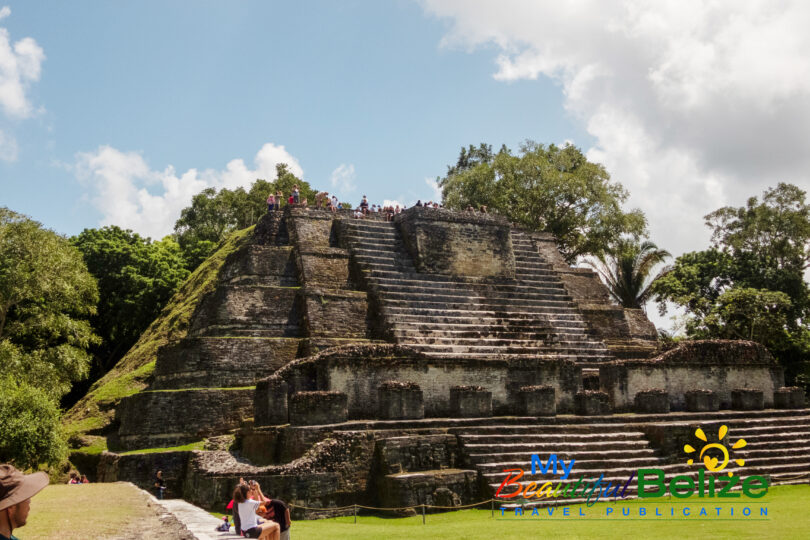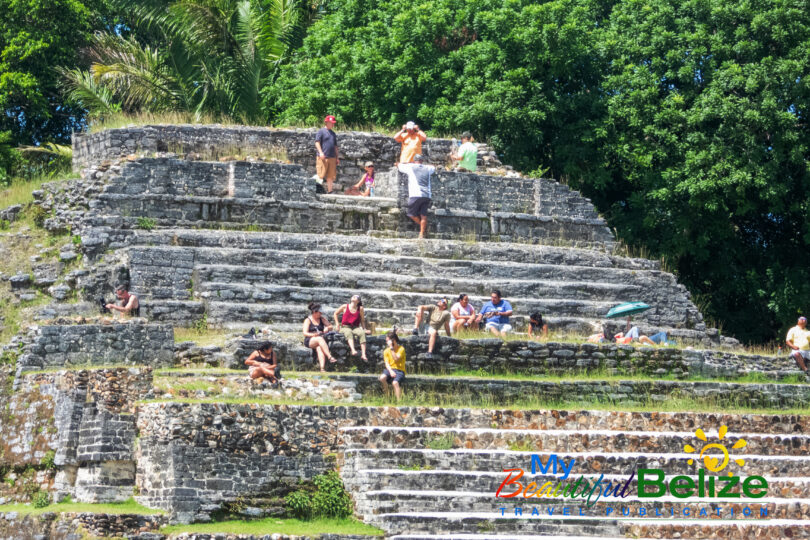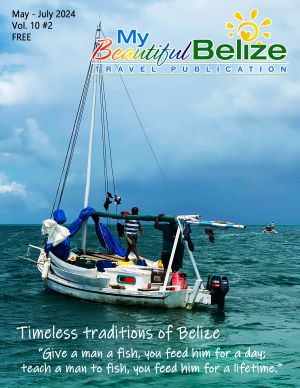What would be more magical than witnessing this sacred occasion within the jungle embrace of a Maya archaeological site? Let’s go to Altun Ha and celebrate at the Temple of the Sun God Tomb!

© Jordana Wright – https://www.jordanawright.com/
On Saturday, October 14, 2023, an annular solar eclipse crossed North, Central, and South America. Although it was visible in parts of the United States, Mexico, and many countries in South and Central America, Belize was one of the best places to watch the cosmic occurrence. Here, spectators could literally walk in the footsteps of the ancient Maya, who were renowned for their astronomical expertise. Among the many heavenly events tracked and celebrated by the Maya were eclipses, often commemorating them in their art and monuments. They were feared occasions and interpreted as the struggle of the sun and the moon, day and night, or the good and the bad. Although revered as a bad omen, they also signified closure and a sign of renewal.
Altun Ha is a Maya site in the Belize District near the Maskall Village, about 30 miles north of Belize City. The most prominent structure is the Temple of the Sun God’s Tomb, also known as the Temple of the Masonry Altars. In the Yucatec Maya culture, the Sun God is Kʼinich Ajaw. The tomb contained the skeleton of an adult male laid to rest in the temple between 600-650 AD. His burial included many offerings, including pieces of jade, shells, and stones.  Researchers believe he must have been a priest or king to have had such a fine burial. The most significant find at Altun Ha is the Jade Head, the largest jade Maya artifact ever found. American archeologist Dr. David Pendergast discovered the artifact in 1968 while excavating for the Royal Ontario Museum in Toronto, Canada. It was in a large tomb under a staircase inside the Sun God’s Temple. Its green color resembled life-giving water and the maize (corn) plant, which the Maya religion says the gods used to fashion people. Archaeologists believe the image to be Kʼinich Ajaw. It features crossed eyes (considered a desirable trait by the ancient Maya), fangs, and the “ahau” glyph on the forehead. The stone weighs 9.75 pounds and is about six inches tall.
Researchers believe he must have been a priest or king to have had such a fine burial. The most significant find at Altun Ha is the Jade Head, the largest jade Maya artifact ever found. American archeologist Dr. David Pendergast discovered the artifact in 1968 while excavating for the Royal Ontario Museum in Toronto, Canada. It was in a large tomb under a staircase inside the Sun God’s Temple. Its green color resembled life-giving water and the maize (corn) plant, which the Maya religion says the gods used to fashion people. Archaeologists believe the image to be Kʼinich Ajaw. It features crossed eyes (considered a desirable trait by the ancient Maya), fangs, and the “ahau” glyph on the forehead. The stone weighs 9.75 pounds and is about six inches tall.
Rich with respect and admiration for the Maya, we weren’t the only ones who migrated like moths to light to experience the eclipse on hallowed ground, and the Institute of Archaeology (IoA) Belize even hosted special events at Altun Ha, Lamanai, and Cerro Maya where they handed out special glasses to stare at the sun safely. At Altun Ha, bus-loads of people from cruise ship tours and countless residents and visitors arrived to behold the celestial event.  Groups and families picnicked under shady trees while many climbed the Temple of the Sun God Tomb to get a birds-eye view of the eclipse while overlooking the expansive grounds. Steeped in magical lighting under the darkened sky, the crowd cheered as the eclipse reached the ‘ring of fire’ phase. Knowing the ancient history of this sacred site was the reason to be there, to imagine the astonishment and wonder of the Maya who bowed and trembled as the moon ate the sun but renewed as they celebrated the sign of closure. We were thoughtful and quiet as we wandered from the site after the sun shone brightly again, feeling renewed and hopeful under the Maya sky.
Groups and families picnicked under shady trees while many climbed the Temple of the Sun God Tomb to get a birds-eye view of the eclipse while overlooking the expansive grounds. Steeped in magical lighting under the darkened sky, the crowd cheered as the eclipse reached the ‘ring of fire’ phase. Knowing the ancient history of this sacred site was the reason to be there, to imagine the astonishment and wonder of the Maya who bowed and trembled as the moon ate the sun but renewed as they celebrated the sign of closure. We were thoughtful and quiet as we wandered from the site after the sun shone brightly again, feeling renewed and hopeful under the Maya sky.


